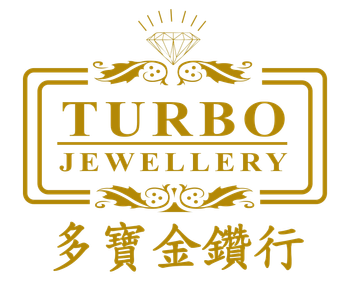The Concept of Gold
Gold is a lustrous yellow precious metal. Gold has the characteristics of good physical properties, stable chemical properties, high ductility and scarcity. It is not only a special currency for reserves and investment but also an important material for jewellery, electronics, modern communications, aerospace, etc. It was the world currency before the 1970s, and it still holds a place in the international reserves of various countries. It is a special currency, commodity and financial attribute at the same time.
The uses of gold include national currency reserves, personal asset investment and value preservation tools, special materials to beautify life, raw materials in the industrial and medical fields.
Gold derivatives: With the gradual maturity of the collection, the gold market is expected to gradually introduce gold forwards, gold futures and even gold options.
The first three numbers of jewellery actually represent the purity of gold:
9999 gold (24K**) – 999.9‰ (99.99%) is Au gold, 0.01% is other metals
999 gold – 999‰ (99.9%) is Au gold, 0.10% is other metals
916 gold (22K) – 916‰ (91.6%) is Au gold, 8.40% is other metals
750 gold (18K) – 750‰ (75.0%) is Au gold, 25.00% is other metals
375 gold (9K) – 375‰ (37.5%) is Au gold, 62.50% is other metals
** 24K means 100% Au gold, 24K gold does not exist in the world, so jewellery will not be marked with 24K. The so-called K gold is a gold alloy that represents less than 999 gold.
Coloured Gold
As the name suggested, coloured gold is gold with various colours. It is an alloy formed by adding 75% of gold to copper, aluminium, silver, platinum, palladium, nickel, and other metals, also known as K gold. The coloured gold on the market is rich in colours, mainly purple, red, pink, orange, green, blue, etc. In terms of price, the more special the colour of the coloured gold, the more expensive the price, such as black and blue.
The difference between 999 gold, 916 gold and 750 gold
These three are the most widely used in jewellery, and many people will confuse these three kind of golds. Pure gold refers to gold with a purity of 999%, 22K gold refers to gold with a purity of 916.6%, and 18K gold refers to 75% gold plus 25% silver and copper.The ratio of silver to copper varies, it will produce yellow, white or red. Because 999 gold is relatively soft, it will be difficult to make jewellery; on the contrary, 750 gold can be used in a wide range because of its high hardness; and 916 gold is between the two, with moderate hardness, making it easily to create various styles same as 750 gold.
In order to solve the weak point of pure gold, 5G gold was born
"5G gold" is the product of the fifth generation of new gold technology. Gold jewellery technology has undergone several generations of innovation.
- The first generation, Pure gold:
Pure gold is a relatively soft precious metal with strong ductility. The gold content of pure gold is not less than 99%. Pure gold is a kind of gold jewellery with high-value preservation and is very popular with consumers. However, the higher the gold content, the softer the hardness. Pure gold jewellery is more prone to deformation and wear, while the emergence of hard gold has changed this status quo. - The second generation, Three nines fine gold:
Three nines fine gold, the logo, and the alias are pure gold 999, pure 999, Au 999, etc. Three nines fine gold is gold with a gold content of not less than 999‰. Because of the content, the price of three nines fine gold is more expensive than pure gold. Although the gap may be a few dollars, customers generally choose three nines fine gold. - The third generation, Four nines fine gold:
Four nines fine gold is gold with a gold content of 999.9‰. The logo and alias are pure gold 9999, pure 9999, Au 9999, and so on. Therefore, four nines fine gold is gold with higher content. Four nines fine gold jewellery is not soldered with solder, it will not reduce the purity of the gold material itself, so the purity is as high as 999.9‰. - The fourth generation, 3D Hard Gold:
The emergence of 3D Hard Gold effectively solves the problem of gold's lack of toughness and three-dimensionality and overcomes the shortcomings of traditional pure gold jewellery that are low in hardness, abrasion, and difficult to maintain fine patterns. Not only does the purity exceed the purity of pure gold, but it also has the toughness of 18K gold hardness, which makes the gold more plasticity and achieves high-level complex shapes with vivid imagery.
Therefore, the production process of 3D Hard Gold jewellery can be combined with carving, hollowing, twisting, and burning to create different stereoscopic effects and vivid shapes.
The unique manufacturing process of 3D Hard Gold is called "electro-forming", which uses electric current to gradually reduce the gold ions in the solution and deposit them on the surface of the cathodic wax. The deposition thickness is only 0.2 to 0.4 mm. Take out the liquid, then drill holes, heat, dissolve the wax mould, clean it with hot nitric acid, bake it, and then process and polish it to form. Therefore, each 3D Hard Gold product has two drill holes formed by machining, and the inside is hollow.
One ton of gold ore had to go through 37 processes which took more than 60 hours. It can produce 4 grams of gold sand on average! Then it undergoes continuous firing at very high temperature (1100 degrees Celsius), an electro-forming process, and finally a dozen further processes which take over forty hours to complete. One could say that your stylish 3D Hard Gold jewellery item is the result of a thousand years of hard work. - The fifth generation, 5G Gold and 5D Hard Gold:
5G Gold has transformed the traditional soft texture of gold jewellery, breaking through the limitations of insufficient colour in K gold and the limited texture of hard gold. It has become a new favourite in the gold industry. Its key features include high wear resistance, extremely high purity, strong toughness and hardness, light weight, sufficient texture, beautiful colour, and the ability to never fade.
5G standards cover 5 dimensions
1G: Purity - 5G Gold boasts a purity of over 99.9%, making it purer than traditional gold.
2G: Hardness - 5G Gold has four times the hardness of ordinary 24K gold, making it more resistant to wear and less prone to scratches.
3G: Weight - Compared to traditional 24K gold, 5G Gold is only half the weight, making it lighter to wear.
4G: Brightness - 5G Gold possesses a unique sparkling sheen that never fades, ensuring it retains its beauty.
5G: Style - The design of 5G Gold is at the forefront of fashion trends, with a peak level of aesthetics to satisfy the modern consumer's tastes.
5D Hard Gold is an upgraded version of 3D Hard Gold, achieved through improvements in the electroforming process and chemical formula. It offers significant advantages, including higher purity, outstanding hardness, lighter weight, and enhanced environmental friendliness due to the absence of cyanide. By improving the electroforming process and upgrading the chemical formula, 5D Hard Gold has attained higher quality, better performance, and increased environmental sustainability, making it a strong competitor in the gold jewellery market.
The notable advantages of 5D Hard Gold are as follows:
- Purity: 5D Hard Gold boasts a purity of over 99.9%, making it as pure as traditional 24K gold.
- Hardness: Compared to 3D Hard Gold, 5D Hard Gold offers higher hardness and resilience, making it more resistant to wear and less prone to scratching or deformation.
- Weight: Despite being the same size as 3D Hard Gold products, 5D Hard Gold is only two-third of the weight, allowing consumers to save more while maintaining quality.
- Brightness: 5D Hard Gold's surface is as smooth as a mirror, enhancing overall brightness and attractiveness.
- Environmental Friendliness: The chemical solution used in 5D Hard Gold production does not contain cyanide, making it more environmentally friendly and contributing to a reduction in adverse environmental impacts.
Summary:
5G Gold is a fashionable and dazzling type of gold jewellery, with a colour that closely resembles 24K gold. However, it comes with higher craftsmanship and production costs. These pieces are typically solid, possessing the hardness, texture, and elasticity of K gold while retaining the lustre of pure gold.
5D Hard Gold, on the other hand, is an environmentally enhanced version of 3D Hard Gold. It is thinner and more resilient, although it lacks the malleability of 5G Gold. These items are typically hollow and feature at least two conducting holes.
Therefore, 5G Gold prioritizes appearance, fashion, and colour, while 5D Hard Gold focuses on being lightweight and durable, with an emphasis on environmental sustainability. The choice between these two types of gold jewellery depends on personal aesthetic preferences and needs.
- Other, Ancient Crafted Gold:
Ancient crafted gold is not a new gold purity but a unique production technique that imparts a distinctive visual appeal while adhering to the national standard for gold purity. This technique gives gold jewellery a sense of heaviness, simplicity, matte finish, and ornateness.
- Heaviness
Ancient crafted gold jewellery typically consists of larger pieces, such as bracelets. This category of heavy metal brings a visual tension and a sense of weight to ancient crafted gold pieces. - Simplicity
Differing from traditional ancient-style designs, ancient crafted gold leans towards a Chinese-style trend. It exudes a rustic effect, seen in features like frosted bracelets and gold bangle bracelets, representing this style. - Matte Finish
Ancient crafted gold is created through manual polishing, resulting in a silky and delicate matte texture. This differs from the traditional glossy appearance and is more in line with the tastes of younger individuals. - Ornateness
The ornateness of ancient crafted gold jewellery differs from the intricate and lightweight designs of ordinary 24K gold. It includes features like floral patterns and auspicious clouds but presents a richer sense of layers, textures, and weight, demonstrating unique elegance.
Ancient crafted gold is produced using a special technique to present a different appearance and style compared to traditional gold jewellery. It appeals to consumers of various age groups because it combines elements of simplicity, matte finish, and ornateness, catering to diverse aesthetic preferences. - Heaviness
Gold Measurement
(1) The unit of measure for the weight of gold:
The main measurement units for measuring the weight of gold are ounces, grams, kilograms (kg), tons, etc. The universal gold measurement unit and gold price in the world commonly use are measured based on an troy ounce.
One troy ounce = 31.103481 grams
(2) Gold purity measurement:
The purity of gold and its products is called "fineness". There are two types of gold product fineness marks on the market: one is percentage, such as G999, and the other is K gold, such as G24K, G22K, and G18K. Our country has regulations on the imprints and identification plate of gold products. Generally, it is required to have the code of the manufacturer, the name of the material, the imprint of the content, etc., and the products without the imprint are unqualified. The same rules apply internationally. But for some very small products, it is allowed without mark.
(3) How to use "K gold" to indicate the purity of gold:
According to international regulations, the gold content of each karat (derived from the French word carat which in turn came from the Italian carato, often written as "K") is 4.166%. Therefore, the gold content of each karat is respectively (the national standard in brackets):
24K = 100% gold (there is no such thing as 24K gold since there is no 100% gold in the world)
So 1K = 1K/24K = 4.166% Gold
22K = 22K/24K = 916.6% ( Au 916 )
18K = 18K/24K = 75% ( Au 750 )
14K = 14K/24K = 583.3% ( Au 585 )
9K = 9K/24K = 375% ( Au 375 )
(4) The method of indicating the purity of gold in words:
Some gold jewellery or gold bars are marked with a text mark, which is stipulated as: Pure gold-gold content is not less than 990‰, usually a representation of the weight of gold divided into 1000 parts, such as 999.9‰ marked with 9999 on a gold piece, and 750‰ marked as 750.
黄金的概念
金,又称为黄金,是一种带有黄色光泽的金属。黄金具有良好的物理属性,稳定的化学性质、高度的延展性及数量稀少等的特点,不仅是用于储备和投资的特殊通货,同时又是首饰业、电子业、现代通讯、航天航空业等部门的重要材料。在20世纪70年代前还是世界货币,目前依然在各国的国际储备中占有一席之地,是一种同时具有货币属性、商品属性和金融属性的特殊商品。
黄金的用途有:国家货币的储备金、个人资产投资和保值的工具、美化生活的特殊材料, 工业、医疗领域的原材料。
黄金衍生工具: 随着收藏的逐步成熟,黄金市场可望逐步推出黄金远期、黄金期货乃至黄金期权等。
关于首饰前面三个数字其实是代表黄金的纯度:
9999金 (24K**)– 999.9‰ (99.99%)是 Au 黄金, 0.01%是其他金属
999金 – 999‰ (99.9%)是 Au 黄金, 0.10%是其他金属
916金 (22K)– 916‰(91.6%)是 Au 黄金, 8.40%是其他金属
750金 (18K)– 750‰(75.0%)是 Au 黄金, 25.00%是其他金属
375金 (9K)– 375‰(37.5%)是 Au 黄金, 62.50%是其他金属
** 24K 代表 100% Au 黄金,世界上不存在 24K 黄金,所以首饰上也不会标记 24K。所谓的K金就是代表999金以下的黄金合金。
彩金
彩金顾名思义彩金就是彩色的黄金。 它是由百分之七十五的黄金加入铜、铝、银、铂、钯、镍等金属熔合而成的合金,又叫做K金。 市面上的彩金颜色丰富,主要有紫红、红、粉红、橙色、绿、蓝等等,从价格来说彩金的颜色越是特别,价格越是昂贵,比如黑色、蓝色。
999金、916金、750金的区别
这三种是首饰中应用最广泛的,很多人会把这三种金给弄混。足金是指纯度 999%的黄金,22K金是指纯度916.6%的黄金,而18K金指的则是75%的黄金加上25%的银和铜,随着银铜的比例不同会产生黄色、白色或红色。999黄金因为比较软所以拿来打造饰品会有一定的难度;反之750金因为硬度高,能被应用的范围也比较多;而916金介于两者之间,硬度适中,打造各类款式不输 750金。
为了解决足金的不足,5G 黄金由此诞生
“5G黄金” 是第五代黄金新工艺的产物,黄金饰品工艺技术经过数代的革新。
- 第一代,足金:
足金是一种比较软的贵金属,延展性很强。足金含金量不少于99%,足金是保值性较高的黄金首饰,很受消费者喜欢,但是黄金含金量越高,硬度越软。用黄金制成的足金首饰也比较容易出现变形、磨损的情况,而硬金的出现则改变了这一现状。 - 第二代,千足金:
千足金,标识及别名是足金999、足999、Au 999等等,千足金就是金含量不低于999‰的黄金,因为含量问题,千足金比足金的价格要更加昂贵一些,虽然差距可能只有几元,但是顾客一般会选择千足金。 - 第三代,万足金:
万足金就是含金量999.9‰的黄金,标识及别名是足金9999、足9999、Au 9999等等,所以万足金就是含量更高一些的黄金,万足金首饰是不用焊料焊接的,不会降低金料本身的纯度,所以纯度高达999.9‰。 - 第四代,3D硬金:
3D硬金的出现有效解决了黄金缺乏坚韧度和立体感的难题,克服了传统足金首饰硬度低、易磨损、不易保持细致花纹的缺点。不但纯度超过足金的纯度,同时兼具18K金硬度的坚韧特性,让黄金具有更强的可塑性,从而达到了造型形象生动的高水平塑性效果。
所以,3D硬金饰品的制作工艺可以结合雕刻、镂空、扭转、烧青等工艺,塑造出不同立体生动、惟妙惟肖的造型。
3D硬金的制造工艺独特,被称为“电铸”,即利用电流将溶液里的金离子逐渐还原,并沉积在阴极性的蜡件表面,沉积厚度仅0.2至0.4毫米,再从电铸液里取出,然后钻孔、加热,将蜡模溶走,用热硝酸清洁、焗干净之后,加工打磨,才能成型。因此,每个3D硬金产品都带有加工形成的两个钻孔,内部中空。
1吨金矿原石历经37道工序,耗时60余小时,平均能产出4克的金砂!经过1100度的高温持续烧制,再经过电铸工艺,历经十几道工序耗时40余小时,可谓历经千磨百炼才能成为您手中时尚又立体的3D硬金首饰。
- 第五代,5G黄金和5D硬金:
5G黄金改变了了传统黄金金饰质地柔软的性质;突破了K金成色不足的限制;突破了硬金质感有限的限制,成为黄金行业的新宠。其主要特点包括耐磨性高、纯度极高、韧性强硬度高、重量轻、质感十足、色泽绚丽,永不褪色等突出特点。
5G 标准涵盖5大维度:
1G:纯度 - 5G黄金的纯度高达99.9%以上,相比传统黄金更为纯净。
2G:硬度 - 5G黄金拥有普通足金四倍的硬度,因此更加耐磨,不容易划伤。
3G:重量 - 相较于传统足金,5G黄金只有一半的重量,佩戴更加轻盈。
4G:亮度 - 5G黄金具有独特的闪亮光泽,而且这种光泽永不褪色,使其保持美丽如新。5G:款式 - 5G黄金的设计走在时尚潮流的前沿,其颜值达到了巅峰水平,满足了现代消费者的审美需求。
5D硬金是3D硬金的升级版本,通过改进电铸工艺和药水配方,取得了更多显著的优势。它不仅提供了高纯度、卓越的硬度和更轻的重量,还更环保,因为不含氰化物。5D硬金通过改进电铸工艺和药水升级,实现了更高的品质、更好的性能和更环保的特点,使其成为黄金饰品市场的有力竞争者。
5D硬金的显著优势包括:
- 纯度:5D硬金的纯度高达99.9%以上,与传统足金一样纯净。
- 硬度:相比3D硬金,5D硬金拥有更高的硬度和韧性,因此更加耐磨,不容易磨损、刮花或变形。
- 重量:尽管与相同尺寸的3D硬金产品相比,5D硬金仅重三分之二,这使消费者能够在保持品质的同时节省更多的费用。
- 亮度:5D硬金的表面光滑如镜面,使整体更加明亮,更具吸引力。
- 环保:5D硬金的制作药水不含氰化物,因此更加环保,有助于减少对环境的不良影响。
总结:
5G黄金是一种时尚且闪烁夺目的黄金饰品,与足金在颜色上基本一致,但制作工艺和工费较高。这些饰品通常是实心的,具有k金的硬度、质感和弹性,同时也保留了黄金的色泽。
5D硬金则是3D硬金的环保升级版本,更轻薄、坚韧,但相对于5G黄金,其延展性较差。这些饰品通常是空心的,而且具有至少两个导流孔。
因此,5G黄金更注重外观、时尚感和色泽,而5D硬金则更注重轻巧和坚韧,同时强调环保因素。选择哪种类型的黄金饰品取决于个人的审美偏好和需求。
- 其他,古法黄金:
古法黄金并非一种新的成色,而是采用特殊工艺制作,以呈现出不同的视觉效果,保持国标足金的成色标准。这种工艺赋予黄金饰品更加厚重、古朴感、哑光、和华丽的外观。
- 厚重感
古法金饰品通常是较大的饰品,例如手镯,这种重金属的品类为古法金饰品带来了视觉上的张力和厚重感。 - 古朴感
古法金不同于传统的古风风格,更倾向于国风潮流。它呈现出古朴的效果,如磨砂手镯和金箍棒手镯,代表了这一风格。 - 哑光
古法金通过手工打磨,创造出丝滑和细腻的哑光质感,与传统的闪亮外观不同,更适合年轻人的品味。 - 华丽
古法金饰品的华丽不同于普通足金的繁琐和轻薄设计。它包括花丝和祥云的设计,但呈现出更丰富的层次感、质感和厚重感,具有独特的品味。
古法黄金是通过特殊工艺制作,呈现出不同于传统黄金饰品的外观和风格,受到不同年龄段消费者的欢迎,因为它融合了古朴、哑光、华丽等元素,符合不同审美趣味。 - 厚重感
黄金的标计方法
(1)黄金的重量计量单位:
计量黄金重量的主要计量单位为:金衡盎司、克、千克(公斤)、吨等。世界上一般通用的黄金计量单位和黄金价格均以金衡盎司计量。
1 金衡盎司 = 31.103481 克
(2)黄金的纯度计量
黄金及其制品的纯度叫作“成色”,市场上的黄金制品成色标识有两种:一种是百分比,如 G999等;另一种是 K 金,如 G22K 、 G18K、G9K 等。我国对黄金制品印记和标识牌有规定,一般要求有生产企业代号、材料名称、含量印记等,无印记为不合格产品。国际上也是如此。但对于一些特别细小的制品也允许不打标记。
(3)用 “k 金” 表示黄金纯度的方法:
国际规定,每开 ( 它源自法语单词克拉carat,而克拉又源自意大利语 carato,常写作 "K") 含金量为 4.166% ,所以,各开金含金量分别为 ( 括号内为国家标准) :
24K = 100% 黄金 (由于世上没有 100%黄金,所以没有所谓的24K黄金)
所以 1K = 1K/24K = 4.166% 黄金
22K = 22K/24K = 916.6% ( Au 916 )
18K = 18K/24K = 75% ( Au 750 )
14K = 14K/24K = 583.3% ( Au 585 )
9K = 9K/24K = 375% ( Au 375 )
(4)用文字表达黄金纯度的方法:
有的金首饰上或金条金砖上打有文字标记,其规定为:足金 -- 含金量不小于 990‰,通常是将黄金重量分成 1000 份的表示法,如金件上标注 9999 的为 999.9‰黄金 ,而标注为 750 的为 750‰黄金。




